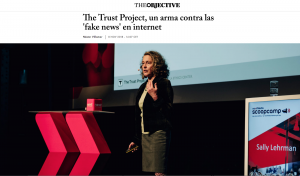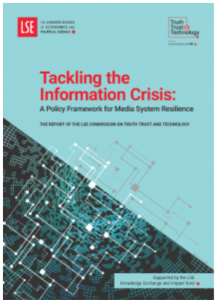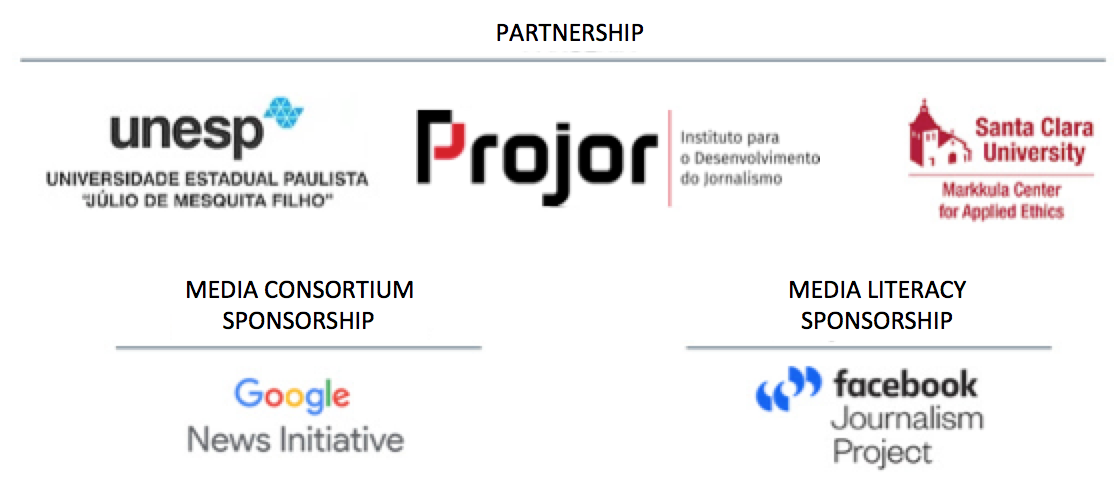Our MVP launch scheduled for May 2019
- The launch of the Minimum Viable Protocol (MVP) of Projeto Credibilidade will be in mid-May 2019, in São Paulo. The event will be likely attended by Sally Lehrman, director of the Trust Project. In the first phase, the MVP comprises three Trust Indicators: Best Practices, Author/Producer and Type of Work. Part of the Brazilian early adopters should be able to adopt more indicators than these three before the launch. Here, the complete list of the Trust Indicators
- We have facilitated the adoption of the Trust Indicators by Brazilian newsrooms, answering questions about the drafting of their ethical and editorial commitments in the indicators system and their respective algorithmic markup
- We have encouraged other members of Credibilidade to begin implementation by adopting at least the Type of Work indicator, which labels different types of digital content such as news, analysis, opinion, satire and paid content by advertisers
We have the dual mission of reflecting on the digital divide and creating tools and techniques to identify and promote reliable and quality journalism on the internet.
Our media consortium participants: Abraji, Agência Lupa, Agência Mural, Época, Folha de S. Paulo, Gazeta do Povo, Jornal da Cidade, Jornal do Commercio, Jornal de JundiaÃ, Nexo Jornal, Nova Escola, O Estado de S. Paulo, O Globo, O Livre, O Povo, PiauÃ, Poder 360, UOL, Valor Econômico e Zero Hora.
The Trust Project

Photo: Sally Lehrman – Â Reproduction of the Spanish site The Objective
How to change algorithms to make them detect quality journalism
In an interview to The Objective, which despite its English name is based in Spain and published in Spanish, Sally Lehrman explained the origins of the Trust Project as a strategy to fight digital misinformation.
According to her, “there has always been deliberate efforts to use something that resembles journalism to distort perceptions.” In addition, the digital economy dictated by the need for clicks and controlled by algorithms has worked to reduce the trust in the media.
Based on this diagnosis, Lehrman developed the concept of the Trust Indicators: “If the algorithm [of platforms like Google and Facebook] is pushing us to adopt the worst behavior, can we not change the algorithm so that it will push us to adopt the best behavior? Then I talked to some people in the tech world and they said, ‘Yeah, of course, you just have to define whatever the algorithm looks for and then to have [the] platforms using the same algorithm.'”
The Trust Indicators system was born, encoding in a clear and friendly way the editorial values “‹”‹and practices of newsrooms. The indicators are published together with the news vehicles’ content both on their own websites and on social networks.
Virtual shelf
LSE report recommends the creation of an agency for digital information

 The LSE report cover / Reproduction
Completing a year of work, a task force commissioned by the London School of Economics (LSE) has published the report Tackling the Information Crisis: A Policy Framework for Media System Resilience.
The report main proposal is the creation of the Independent Agency of Platforms, or IPA, which would have the role of evaluating the effectiveness of platforms’ self-regulatory policies, as well as the quality of digital journalism. IPA would report to the British Parliament and offer policy advice on the sector.
The report also proposes that the agency be financed by a new levy on social media platforms, as well as funding from the advertising sector. Also according to the report, IPA would be a permanent forum for monitoring and reviewing the behavior of digital platforms, producing annual studies on “the state of disinformation.”
A new FT tool warns if articles quote too many men
According to The Guardian, the British newspaper Financial Times has developed a bot to encourage its journalists to seek more female sources for reporting and analysis. The technological novelty was created after the media organization concluded that only 21% of the people mentioned by the FT were women. The bot analyzes pronouns and the genre of first names to determine whether a source is male or female.
FT editors are warned when articles under their responsibility are not following the newspaper policies on diversity of voices. According to the Guardian, “the paper, which covers many male-dominated industries, is keen to attract more women readers, with its research suggesting they are put off by articles that rely heavily on quotes from men.”
